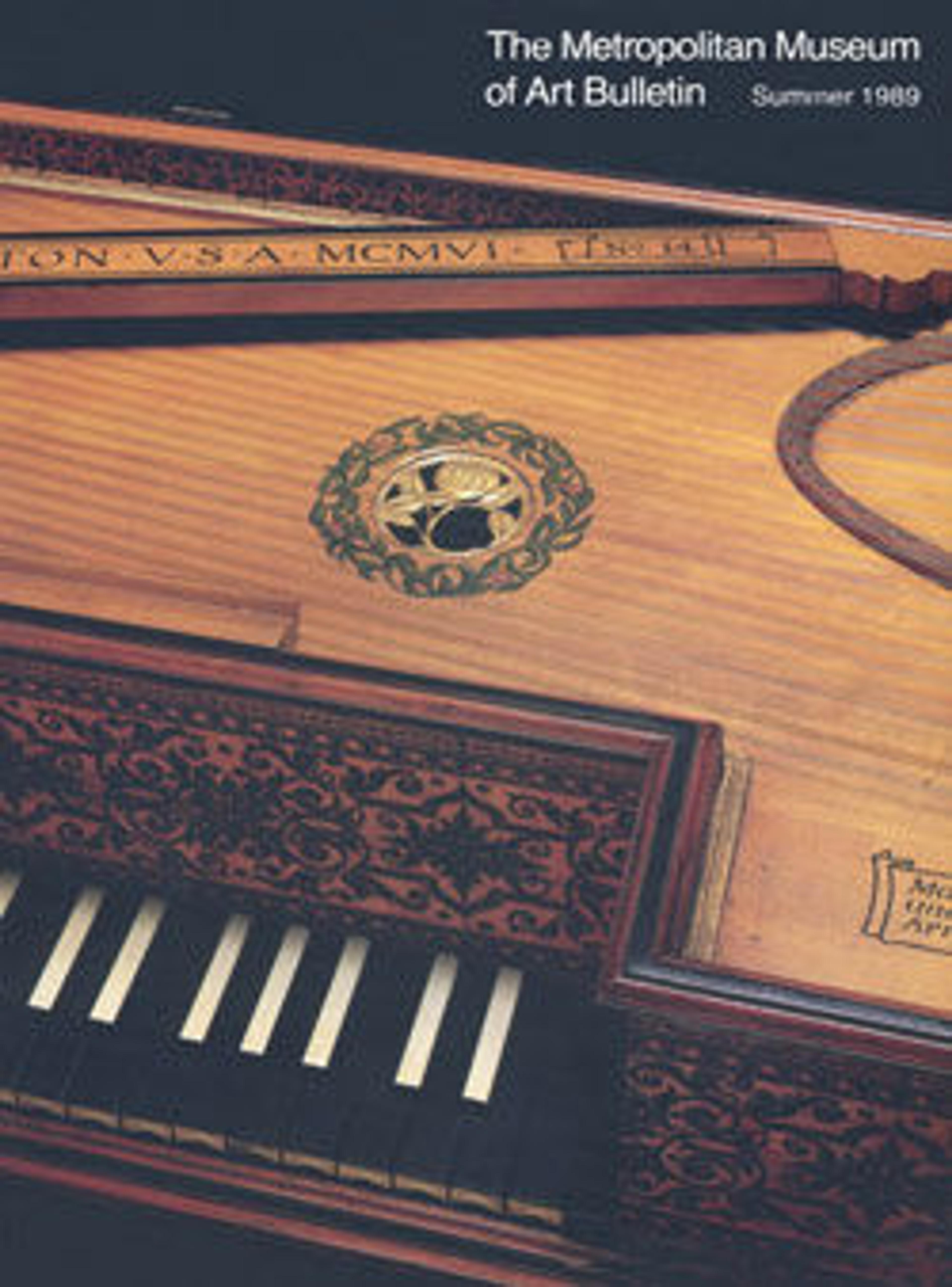Harpsichord
Jacob Kirkman (anglicized form of Kirchmann) was a Swiss Alsatian who immigrated to England in the early 1730s and found employment with the harpsichord maker Hermann Tabel. After Tabel's death in 1738, Kirkman married his widow and took over his master's workshop materials and stock of harpsichords. Jacob later formed a partnership with his nephew Abraham, who later took his own son Joseph into the firm. The Kirkman firm was one of the finest and most prolific makers of keyboard instruments in England and in addition to harpsichords built pianos beginning in the late 18th century. As the piano became more popular the firm began to focus on building the newer instruments and built its last harpsichord in 1809.
Technical description: Oak case veneered on the exterior with mahogany panels surrounded by cross-grained mahogany banding and light stringing, with an exterior bottom molding of mahogany; the interior veneered in figured maple or sycamore with dark stringing; the keywell veneered in walnut burl, surrounded by cross-grain walnut banding, with dark and light stringing; lid of solid mahogany; on a stand of four square legs with stretchers, wooden casters; FF, GG-f3, 2x8 ', 1x4', buff stop on the back 8 '; ivory naturals with molded sycamore fronts, ebony accidentals; three-rail keyframe with front guide pins; jacks of pear with single flag dampers, bristle springs, quill plectra, and staples to limit rear travel of tongues; registers controlled by four brass knobs that protrude through the nameborad, and by a "machine stop" pedal that moves the front 8' and the 4' registers to their off position as long as it is depressed; cast metal rose in soundboard. (Laurence Libin)
Technical description: Oak case veneered on the exterior with mahogany panels surrounded by cross-grained mahogany banding and light stringing, with an exterior bottom molding of mahogany; the interior veneered in figured maple or sycamore with dark stringing; the keywell veneered in walnut burl, surrounded by cross-grain walnut banding, with dark and light stringing; lid of solid mahogany; on a stand of four square legs with stretchers, wooden casters; FF, GG-f3, 2x8 ', 1x4', buff stop on the back 8 '; ivory naturals with molded sycamore fronts, ebony accidentals; three-rail keyframe with front guide pins; jacks of pear with single flag dampers, bristle springs, quill plectra, and staples to limit rear travel of tongues; registers controlled by four brass knobs that protrude through the nameborad, and by a "machine stop" pedal that moves the front 8' and the 4' registers to their off position as long as it is depressed; cast metal rose in soundboard. (Laurence Libin)
Artwork Details
- Title:Harpsichord
- Maker:Jacob Kirkman (British, born Bischwiller, Alsace, France 1710–1792 Greenwich, England)
- Maker:Abraham Kirkman (British, born Bischwiller, Alsace, France, 1737–1794 Hammersmith, England)
- Date:1781
- Geography:London, England, United Kingdom
- Culture:British
- Medium:Wood, various materials
- Dimensions:inst.: 222cm x 94cm x 32cm
stand: 154cm x 90cm x 62cm - Classification:Chordophone-Zither-plucked-harpsichord
- Credit Line:The Crosby Brown Collection of Musical Instruments, 1889
- Object Number:89.4.1678
- Curatorial Department: Musical Instruments
More Artwork
Research Resources
The Met provides unparalleled resources for research and welcomes an international community of students and scholars. The Met's Open Access API is where creators and researchers can connect to the The Met collection. Open Access data and public domain images are available for unrestricted commercial and noncommercial use without permission or fee.
To request images under copyright and other restrictions, please use this Image Request form.
Feedback
We continue to research and examine historical and cultural context for objects in The Met collection. If you have comments or questions about this object record, please contact us using the form below. The Museum looks forward to receiving your comments.
